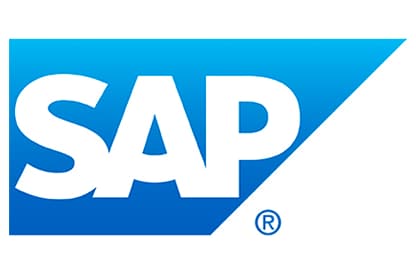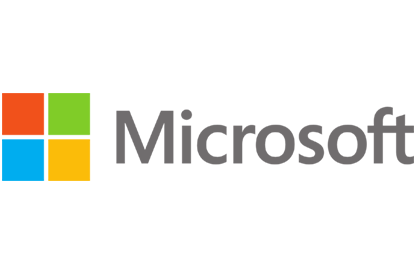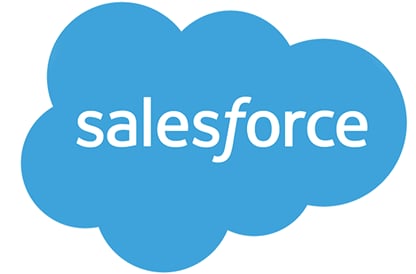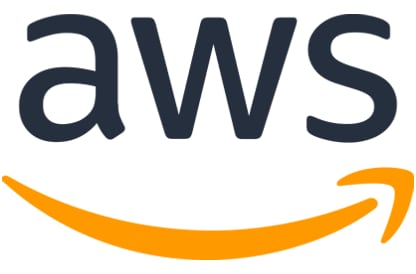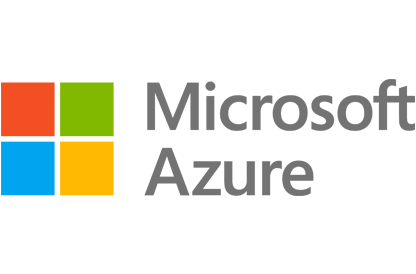What is the SDLC ?

Overview
To create high-quality software, you need a process in place that helps you manage your time and resources. That's where the software development life cycle (SDLC) comes in. SDLC is a methodology that helps developers plan, design, develop, test, deploy, and maintain high-quality software products. It provides a structured approach to software development, ensuring efficiency, predictability, and reliability. By following SDLC methodologies, businesses can reduce risks, control costs, and deliver software that meets user requirements.
You can use this software quality management process for both small-scale projects and large-scale enterprise applications.
There are many different SDLC models out there, but they all feature similar steps: planning, creating, testing, deploying, and monitoring. In the next section, we'll discuss these steps in more detail.
Software Development Life Cycle (SDLC)
Software development life cycle phases
The SDLC methodology involves five phases:
1. Planning: Developers determine the goals and objectives of their projects. They also create a timeline for their work and establish what resources they will need.
2. Creating: Developers start coding the software. This is where they put their plans into action and start working towards their goal while all following the same blueprint.
3. Testing: Developers test their code—running several tests that uncover code quality, integration capabilities, and performance—to ensure the software works as intended. They also perform crucial DevOps and value stream management (VSM) functions.
Why is SDLC important?
The application life cycle management methodology is important because it helps developers create high-quality software products and provides a foundational framework for all project activities. When following the SDLC methodology, all project stakeholders gain visibility into the project from start to finish. It also helps developers manage their time and resources more efficiently and provides simplified project tracking.
SDLC is a necessary part of any software development project, as it can help your organization build high-performance products. The software development life cycle adds value in the following ways:
- It provides an effective framework and method for developing applications.
- It allows developers to analyze the requirements and helps in effectively plan before starting the actual development.
- It enables developers to estimate the costs in the initial phases and prevent costly mistakes.
- It enables developers to design and build high-quality software products by following a systematic process that allows them to test the software before it is rolled out.
- It provides a basis for evaluating the effectiveness of the software, thus further enhancing the software product.Reduces risks by identifying potential issues early in the process.
- Improves software quality by incorporating testing and validation phases.
- Ensures compliance with industry standards and regulations.
What are the benefits of implementing an SDLC?
If you're still on the fence about implementing an SDLC for your upcoming software development project, here are some benefits that the framework can provide:
- Increased visibility
- Reduced development and production costs
- Reduced software development risks
- Increased software quality
- Faster time to market
- Improved customer satisfaction
SDLC provides one of the highest levels of software project management, control, and documentation. At its core, SDLC ensures all developers and stakeholders have a firm grasp on the project’s “why” and the direction they must follow to arrive at their unified goal.
What's the difference between SDLC and project management?
It's important to note that the software development life cycle is not the same as project management. SDLC is a framework for developing software, while project management is a process for managing all aspects of a project.
Project managers use tools like Gantt charts and task lists to track milestones and deadlines. They also work with developers to ensure that projects are on track and within budget.
While SDLC and project management are two different concepts, they often work together. In fact, many project managers use SDLC as a guide for managing their projects. OpenText™ Project and Portfolio Management merges SDLC and project management into one tool to optimize portfolios so teams can deliver cutting edge innovations on-time and on-budget.
Examples of Software Development Life Cycle models
There are many ways to implement SDLC into your project. The most common models are:
- Waterfall: The waterfall model is one of the oldest and most well-known SDLC models. This model focuses on the principle of "moving water down a waterfall." In other words, the team needs to complete each phase of the project before moving on to the next phase.
- Agile: The agile model is a more modern approach to software development. This model focuses on the principle of "moving quickly and efficiently.” Agile projects are typically broken up into smaller pieces, or iterations, which helps developers move faster and make changes more easily.
- Lean: The lean model is like the agile model, but it focuses on efficiency and waste reduction. This model focuses on the principle of "eliminating waste." Lean projects are typically shorter in duration and have fewer features than agile or waterfall projects.
- Iterative: In this model, each development cycle results in an incomplete product. As the process goes on, each cycle produces more project requirements until developers finish the product.
- Spiral: This model focuses on the specific risk patterns of a product, as the development team decides which other process model to incorporate.
- V-Shaped: In this model, developers run validation and verification processes simultaneously. Developers run this model in a V-shape, with each development phase having a unique testing phase.
- DevOps: This model combines development and operations for faster, more reliable software releases.
What is the Secure Software Development Lifecycle (SSDLC)?
While there are multiple SDLC models (waterfall, agile, iterative, etc.), many companies have, or are transitioning to, a DevOps model. When security is integrated as part of this process, it is referred to as DevSecOps, Secure DevOps, or sometimes as the Secure Software Development Lifecycle (SSDLC). In the SSDLC, security processes are implemented in all stages of the development life cycle. This is widely accepted as a security best practice to improve resilience to cyberattacks.
If you pay attention to the latest headlines, you’ll see how cyberthreats are wreaking havoc on businesses across the globe. And while software security is becoming a higher priority, for many businesses it’s still an afterthought.
This need for greater software security comes at a time when there is tremendous pressure on developers to build better applications faster than ever and modernize those apps faster, too. As a result, development teams are turning to more agile processes to further streamline workflows and reduce time to market. This is a big reason why companies are implementing a DevSecOps approach that looks at the entire SDLC and integrates security testing from beginning to end.
How does DevSecOps relate to the SDLC?
DevSecOps enables seamless application security earlier in the software development life cycle, rather than at the end when vulnerability findings that require mitigation are more difficult and costly to implement. Having this DevSecOps mindset means more secure development, security testing, and continuous monitoring and protection in the CI/CD pipeline.
Because the goal of DevSecOps is to make security part of the software development workflow, this means everyone is involved in ensuring that applications are secure, not just the AppSec team. This means implementing secure coding best practices and testing automation, rather than “bolting it on” at the end of the life cycle. This is commonly referred to as “shifting security left” or simply “shift left.” 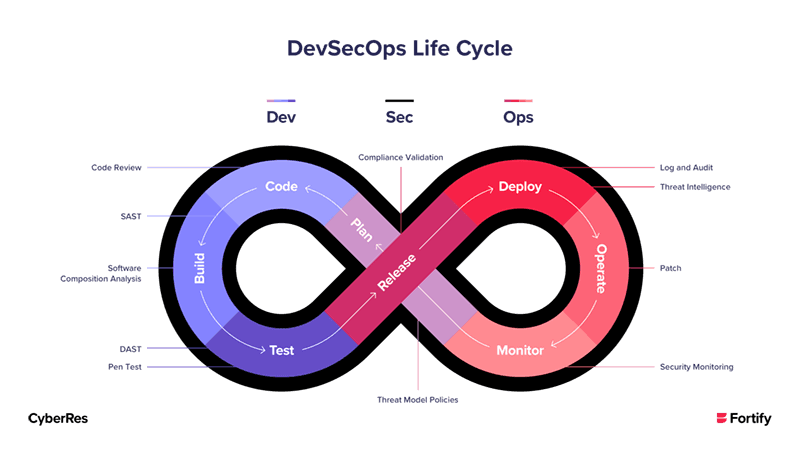
Why is it important to shift security left in the SDLC?
The idea of shifting security left in the SDLC upends the traditional notion of how, when, and where security controls can be integrated into software development. “Shift left” means finding ways for these formerly siloed groups to work together to develop rapid, but also secure, code releases.
Best practices for shifting security left in the SDLC include:
- Create a policy for developers to fix vulnerabilities.
- Fail fast, fix fast.
- Integrate Static Application Security Testing (SAST).
- Scan code as developers write it.
- Set up automated DAST scans to monitor for changes in code.
Leverage both SAST and DAST to get the advantages of both kinds of testing.
How does OpenText Core Application Security (Fortify)help with SDLC?
Fortify offers a complete toolset of application security solutions to shift security left in your SDLC. By design, OpenText™ Core Application Security (Fortify) and other OpenText tools bridge the gap between existing and emerging technologies—which means you can innovate faster, with less risk, in the race to digital transformation.
OpenText Core Application Security (Fortify) offers the most comprehensive static code analysis and dynamic application security testing technologies backed by industry-leading security research.
How OpenText Core Software Delivery Platform can help with SDLC
Searching for an SDLC platform than can streamline development? OpenText Core Software Delivery Platform can help improve the software development life cycle in several ways.
At its core, OpenText Core Software Delivery Platform provides a central repository for all project information. This includes requirements, code changes, and test cases. This single-pane-of-glass approach helps ensure that everyone is on the same page and that all project information is easily accessible.
OpenText Core Software Delivery Platform also leverages test management and traceability to spot key issues during the SDLC process and create better products.
In addition, OpenText Core Software Delivery Platform offers reporting and analytics features that can help improve project visibility. These features allow key project stakeholders to see which areas of the project are on track and which areas need improvement.
Use OpenText Core Software Delivery Platform today to improve your SDLC
The software development life cycle is an important process for any software development project. It helps developers create high-quality products, manage their time and resources, and track their progress more accurately.
If you want to improve the quality of your software products, using OpenText Core Software Delivery Platform is the first step. By following a well-defined SDLC approach, businesses can streamline their development processes, improve productivity, and meet customer expectations. Whether using traditional or modern SDLC models, aligning the process with project goals is essential for success. Contact us today to learn more about starting a free trial.
How OpenText Observability and Service Management can improve your SDLC
OpenText™ Observability and Service Management Cloud automates infrastructure provisioning and application deployment, ensuring consistency and compliance across all environments. This reduces deployment time and minimizes configuration and security errors.
For ongoing operations, OpenText Observability and Service Management Cloud handles patch and configuration management automatically, helping maintain a secure, optimized IT environment across on-prem and cloud systems—ideal for hybrid infrastructures.
Its monitoring and observability tools provide real-time insights into system performance, enabling proactive issue resolution and reliable service delivery.
Most importantly, OpenText Observability and Service Management Cloud offers analytics that drive continuous improvement, helping IT teams make data-driven decisions and plan strategically for the future.
Resources
-
The new wave of application quality Rewrite the rules of software delivery with OpenText quality management
-
Raise the Bar on Your Software Delivery Game: OpenText’s DevSecOps MVPs Take the Gold
-
Increase speed and accuracy with AI driven static analysis auditing
-
Gartner names Fortify a Leader in critical capabilities
-
OpenText helps U.S. federal agencies deliver ITSM more securely with less complexity
